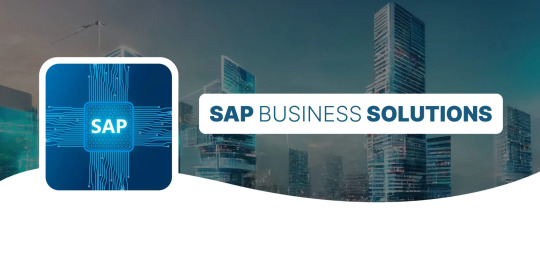#project uat
Text
✨️🌌💙 Showcasing my new look of my OC Adrex Trans Appreciation works since 2021 - 2022! 💙🌌✨️
⚠️ Hopefully with the new update Tumblr guidelines I don't get taken down my OC works post, this are suppose to be some my conceptual illust artistic expression ideas 🙏💦 But if anyone note me up if is necessary to filter it, I'll just filter it 👍
Last year, after learning so much the art style of the incredible DBZ animation and everything, I decided to make changes to my OC and this is how I brought him his new look ✨️✨️✨️ I cannot believe how much I have improved since I been studying on watching episodes and everything I took advices of incredible DB artists. It's been a huge help on doing 🙏 Everything currently has been huge, and I have a huge love of my OC so much, and I'm gonna give so much to complete my project on doing more studies and concepts as possible 💙💙💙



There some of my works I wasn't so daring, but with a little confident to do, at least it wasn't too extreme. 😅 Since my OC it's an alien extinct species design I did years ago before I made changes, I might not get too much trouble, since most of my works of my OC are a lot concepts and some are artistis expressions idea on how the character looks, even brief of the story on how the environment it's gonna do the character 💡







My biggest goal is that I need to create a new updated character sheet of my OC, kinda a big concept art of his full measure body and everything etc depending on 🙏 So hopefully TBA I can start on doing the most the design appearance of my OC 💙✨️
BEWARE SPOILERS!! THIS ARTWORKS IS COPYRIGHTED. DO NOT DISTRIBUTE IT. DO NOT MAKE ANY CHANGES. DO NOT STEAL IT. ALL RIGHTS RESERVED.
All designs created by me. @unialien.
💙 Support my art & my project for more here: https://linktr.ee/unialien
#oc artwork#OC#original character#alien oc#digital art#original species#character art#alien art#Project UAT#concept art#anime art#inspiration#blue art#illustration#traditional art#character design#my art#artist on tumblr#procreate#sketchbook#watercolor art#acrylic art#artistic expression#anime#anime and manga#scifi#scifi art#conceptual#latin artist#design
2 notes
·
View notes
Text

24 notes
·
View notes
Note
UAT! MC tend to hide themselves in their piles of fluffy blankets and pillows to relieve some of their homesickness.
Basically the platonic yanderes/romantic yanderes need to find UAT! MC if they want to comfort them.
You can make it into a one-shot too.
CAN IT BE CANON THAT WHEN THEY HAVE A CLOSET THEY MAKE A NEST!? LIKE THE NEST IT OF BLANKETS, PILLOWS, AND STUFFED ANIMALS!?!? PRETTY PLEASE!!!
TW/CW:Yandere behavior, unhealthy behavior, unhealthy relationship, abusive behavior, abusive relationship, pretty fluffy behavior, still a yandere AU so adding the usual tags, I want a sleeping nest and I’m projecting, tell me if I need to add anything
Summary:Home…that’s the place we all want to go to everyday yet sometimes we can’t, sometimes we can deal with it with no problem yet…other times we miss going home

Staring as you held one of your pillows close, you begin remembering home…you miss when you would walk around and sing with your guardian with no problem or fear. You miss going home but you can’t..you can’t do anything at all, not without the fear from that fucking factory.
You snuggled deeper into your fluffy blankets and pillows not listening to the world around you. You really just wanted everything to go away and go back home..that’s what you really wanted..you yearned to go home. Everyone was looking for you as they knew you were feeling homesick.
You peaked out when you saw Gayatri smiling softly as she waved. She then softly spoke “Hello there..you mind if I join you?”, you thought about it for a while then scooted over to let her join. When she joined she started silently comforting you, no words needed to be said when she comforted you.
#✉️mail arrived✉️#genderfluid enity answers!#yandere#please don’t do this#obession#unhealthy#platonic yandere#yandere platonic#gn reader#yandere x gn reader#x gn reader#gender neutral reader#gender neutral y/n#yandere x gender neutral reader#yandere spiderverse#yandere spider man across the spiderverse
36 notes
·
View notes
Text
"why wouldn't you have time to produce 3 helpdesk articles and an SOP AND continue to manage all of your 26 projects, do training, lead UAT, manage all add on/consultant/integration/end to end training engagements from live customers, do BA and define requirements for custom development requests, do new hire onboarding and cross train on the other software?"
my guy i just spent 2 hours updating the same information in like 5 different places for 4 projects because you couldn't knock your brain cells together hard enough to ask for the info you needed or read one of the 10 places the info already is. you think that's going to give me MORE time to do internal work?
3 notes
·
View notes
Text
What Does Software Development Entail?
The process of producing a software application is called software development. It includes the steps of design, development, and testing. Upon completion of the final product, it is deployed into a UAT or production environment based on the customer's specifications. This procedure can be divided into three major phases: design, construction, and monitoring. During the design phase, the software team collects, bundles, and tests the application's required components. After this is complete, the software program is released into production. In the monitoring phase, the software is utilized live to measure system performance, user satisfaction, and security flaws. In addition to bug hunting, the monitoring phase may also involve other activities.
The history of software development is intricately intertwined with the evolution of computers. The first computers, sometimes known as analog computers, were mechanical devices. Joseph Marie Jacquard invented a mechanism for guiding patterns on a loom using cards with punched holes. Later, this technique was utilized to program early computers. John Mauchly designed the first computer programming language, C++, in the 1950s.
When developing software for a business, the software's properties are crucial. These qualities consist of portability, adaptability, and utility. Each trait is essential for a distinct type of application. A well-designed software satisfies these needs, is intuitive, and anticipates future modifications. Additionally, the program must be modular and scalable.
The software's architecture and problem-solving techniques are specified in the design phase of software development. In addition, it includes the selection of programming languages and technology. Next, the team writes code. A professional tester subsequently evaluates the software. Developers and testers interact throughout the process to ensure that the application functions as intended.
Typically, the initial software delivery increment contains the main product, which stakeholders can test. The following iteration then builds upon this basis by giving additional functionality. In this manner, the features with the highest priority are developed first. For instance, the most significant elements of a social media platform may be user login and profile building. Moreover, it may add additional capabilities in the future.
The service provider must have a well-defined project scope when a client hires a development team. The client should clearly understand the desired characteristics and how to accomplish them. Additionally, the team should have a well-defined budget so that the service provider can charge accordingly. It is essential to note that software development costs vary depending on the client's desired features. The project's price will increase according to the specificity of its needs.
There are various applications for software development outside of the traditional IT business. According to studies by the Brookings Institution, the IT industry represents only a quarter of software development organizations. However, the ICT sector accounts for $133 billion in company R&D expenditures.
Prototypes are an integral part of any software development project, and to create successful and usable software, software engineers must understand their users' demands. This procedure frequently results in issues, such as inadequate specifications or a limited version. In addition, people may mistake a prototype for the final product and expect it to perform identically.
The Software Development Life Cycle (SDLC) is a specific quality assurance procedure software development businesses use. It follows a defined methodology and entails numerous actions that must be performed logically. It begins with the software project specification and concludes with the deployment of the finished product. Also included are software testing and maintenance.
In brief, software development is the process of creating computer software. The procedure involves using specialized programming languages to develop software that addresses an organization's business objectives. There are numerous stages in software development, but planning is often involved. When a software development project is complete, it is released to a testing environment. The testing environment examines the software for errors, flaws, and other issues.
The creation of applications is another sort of software development. These forms of software are intended to provide users with functionality and can run on personal computing devices, cloud servers, or within an organization's IT department. In addition, there is development for media streaming, system software, and embedded software.
7 notes
·
View notes
Note
So this would honestly be a big project but maybe after the miraculous arcs end at season 5 what you could do is essentially free up the miraculous characters to essentially join the full crossover.
Like their situation kind of forces them to stay in Paris and it keeps everyone else out, so maybe after it's done you could craft a plot that revolves around uniting the main teams in the crossover (miraculous, UAT, team Phantom, and the Equestria team) to deal with some kind of unified threat/story.
It would also give you an excuse to go all in on your OCs like Ariel, Wolfe, and Guy who only really shine in the blog.
Maybe?
7 notes
·
View notes
Text
I feel like today has been wildly productive even by my standards, and I’m going to put a list here so that tomorrow when I decide if I should get myself a concert ticket or not, I have this to remind myself:
-Had a meeting to introduce my boss to a big name plush designer, in hopes of commissioning her. Went well, contract is going out.
-Was able to introduce a friend to a production manager for a film project.
-Got my passport in the mail, first time having one, v excited about it-- and got a passport holder to keep it in.
-Completed 2nd to last round of UAT on a year long UI/UX project
-Installed a ceiling light fixture in my apartment
-named and wrote copy for a half dozen products
-designed a half dozen more
-Prepped for an upcoming convention at the end of the month
-Booked booths for two more conventions at the end of the year
-began training my cat to use buttons to tell me what he wants
-replaced all the pin backs on my patches and pins vest with locking pin backs
-swapped out my winter and summer wardrobes
-donated all the clothes I don’t wear anymore
-helped my boyfriend with his maid of honor duties long distance via text
-helped my old lady friend get a nicer smart phone
-taught my old lady friend how to use the apps on her new phone
-ordered luggage for an upcoming trip
-ordered a phone case and glass for Suzen’s phone
5 notes
·
View notes
Text
DFCU Bank Uganda Jobs 2022 – Business Systems SupportSpecialist

Job Title: Business Systems Support Specialist – DFCU Bank Uganda Jobs 2022
Organisation: DFCU Bank
Duty Station: Kampala, Uganda
Reports to: Manager (Applications and Channels)
DFCU Bank Profile:
DFCU Bank is a fast growing commercial bank offering a variety of innovative products and services. DFCU Limited was started by the Commonwealth Development Corporation (CDC) of the United Kingdom and the Government of Uganda through the Uganda Development Corporation (UDC) under the name of Development Finance Company of Uganda Limited. Later restructuring brought in DEG (of Germany) and International Finance Corporation (IFC) as equal partners with CDC and UDC, each having a 25% stake in the company. Its objective was to support long-term development projects whose financing needs and risk did not appeal to the then existing financial commercial lending institutions.
Job Summary:
Reporting to the Manager- Applications and Channels, the Business Systems Support Specialist is responsible for providing oversight on the day-to-day technical activities on back-office processing systems (non-channel) used by internal customers to facilitate internal processing through conducting regular service review engagements with vendors, documentation for all projects and change implementation related to business systems across the products and channel partners while adhering to bank policies and SLA standards.
Roles and responsibilities:
- Supervise the Application administrators supporting the bank’s back -office (non-channel) Applications.
- Escalation point for all internal Applications (back-office systems) on performance challenges.
- Participate in the IT projects change implementation & operations programs in accordance with the banks policies and standards; UAT testing, deployment activities into the production environment, post implementation reviews, operations and disaster planning and recovery.
- Monitoring and Performance Reporting on the Bank’s Business support applications.
- Coordinating regular field/technical service review engagements with service providers (including external third-party vendors and internal L3 support) – per established review framework (e.g., performance reviews, audits etc).
- Supporting L2 incident response, problem resolution and continuous improvement of the business technology service delivery.
- Document, advise and lead Service lifecycle management (SLM) activities for the bank ecosystem including software maintenance routines, license renewals and upgrades.
- Support the audit management process including audit issue resolution, and closure.
- Identify and report any exceptions that present unnecessary cost, risk, or degradation of customer experience to the relevant stakeholders.
- Assess all the configuration management (change configuration/release management) processes.
Minimum Qualifications:
- The ideal candidate for the DFCU Bank Business Systems Support Specialist job must hold a Bachelor of Science in Computer Science, IT, Engineering, or other numerical biased field from a reputable university.
- Certification in database management, digital finance practices, instant payments, and technology governance (ITIL etc.) are preferred.
- Three years of technical experience supporting bank IT applications and back-office applications in medium to large organizations.
- Practical hands-on Banking Applications Support skills.
- Exceptional oral and written communication skills with the ability to communicate clearly and persuasively, interpret documents, understand procedures, write reports and correspondence; speak clearly to third parties and fellow staff members.
- Knowledge of practical application of business concepts & administration procedures.
- Advanced hands-on systems Computing skills.
- Analytical Thinking & Complex Problem solving.
- Curious, engaging, detail oriented and organized.
- High level of integrity and ethical standards.
- Excellent interpersonal, verbal, written, communications and independent judgement skills.
- Ability to prioritize work.
- Inspire Commitment –Actions and behaviors are consistent with words.
- Self-Development – Pursues positive change in self and organization. Drives own personal development plan.
How To Apply for DFCU Bank Uganda Jobs 2022
If you believe you meet the requirements as noted above, please forward your application with a detailed CV including your present position and copies of relevant professional/academic certificates (University Transcript, O & A level), to the email address indicated below;
[email protected]
dfcu Bank is committed to give equal opportunities in employment and aims to ensure that it does not discriminate against gender or race. Only short-listed candidates will be contacted through +256 312 300391.
Disclaimer: dfcu Bank does not solicit/accept payment in cash/kind from prospective candidates in exchange for shortlisting or job placement. Any candidate who engages in this kind of transaction is aiding and abetting fraud and will be automatically disqualified.
Closing Date: 29th July 2022
For similar Jobs in Uganda today and great Uganda jobs, please remember to subscribe using the form below:
NOTE:
No employer should ask you for money in return for advancement in the recruitment process or for being offered a position. Please contact Fresher Jobs Uganda if it ever happens with any of the jobs that we advertise.
Read the full article
3 notes
·
View notes
Text
Boomi Implementation

Boomi Implementation
Title: Mastering Boomi Implementation: A Roadmap to Integration Success
Introduction
In today’s rapidly evolving digital landscape, businesses need agile and seamless integration between various applications, systems, and data sources. Boomi, a leading cloud-based iPaaS (Integration Platform as a Service), offers a powerful solution to streamline integration processes and accelerate digital transformation. Successfully implementing Boomi, however, requires careful planning, strategic design, and a well-defined approach. This blog post will delve into the key steps and best practices to guide you on your Boomi implementation journey.
Critical Stages of Boomi Implementation
1. Planning and Assessment
Define Business Objectives: Clearly outline the business problems you aim to solve with Boomi. What are your pain points, desired outcomes, and key performance indicators (KPIs) for the integration project?
Identify Integration Scope: Determine the applications, systems, and data sources that need integration. Assess their complexity, data formats, and any specific requirements.
Team Formation: Assemble a cross-functional team with representation from IT, business stakeholders, and potentially a Boomi implementation partner for expertise and support.
2. Architecture and Design
Integration Patterns: Based on your business needs and the systems involved, choose the most appropriate integration patterns (e.g., real-time, batch, publish-subscribe).
Process Design: Create detailed Boomi process flows that map out data transformations, error handling, exception management, and any required business logic.
Security and Compliance: Design robust security measures to protect sensitive data in transit and at rest, adhering to relevant industry regulations and compliance standards.
3. Development and Testing
Iterative Development: Employ an agile development approach, breaking the implementation into smaller, manageable iterations for incremental progress.
Environment Setup Designate dedicated Boomi environments for development, testing (QA), and production to ensure separation of concerns and reduce risks.
Thorough Testing: Conduct rigorous unit testing, integration testing, performance testing, and user acceptance testing (UAT) to identify and rectify issues early on.
4. Deployment and Monitoring
Change Management: Establish a formal change management plan to govern the deployment of Boomi processes across environments, ensuring a smooth transition.
Monitoring and Alerts: Implement proactive monitoring of Boomi processes to swiftly detect and address any errors, anomalies, or performance degradation.
Metrics and KPIs: Define and track relevant metrics and KPIs to measure the success of your Boomi implementation and its alignment with your business objectives.
5. Governance and Optimization
Center of Excellence (CoE): Establish a Boomi Center of Excellence to provide ongoing support, training, and best practice guidance across the organization.
Continuous Improvement: Regularly review and optimize your integration processes based on changing business requirements and technology advancements.
Best Practices for Success
Start Small, Scale Fast: Begin with a few high-value integration use cases for an initial pilot project. Once successful, expand the scope and complexity of your Boomi implementation.
Leverage Boomi Community: Access the extensive Boomi community resources, including knowledge base articles, forums, and tutorials.
Partner for Expertise: Consider engaging a Boomi implementation partner to provide specialized knowledge, speed up time-to-value, and ensure long-term success.
Conclusion
Following these outlined steps and best practices can lay a strong foundation for a successful Boomi implementation that drives efficiency, agility, and innovation within your organization. Embrace the power of Boomi to unlock the full potential of your integrated enterprise.
youtube
You can find more information about Dell Boomi in this Dell Boomi Link
Conclusion:
Unogeeks is the No.1 IT Training Institute for Dell Boomi Training. Anyone Disagree? Please drop in a comment
You can check out our other latest blogs on Dell Boomi here – Dell Boomi Blogs
You can check out our Best In Class Dell Boomi Details here – Dell Boomi Training
Follow & Connect with us:
———————————-
For Training inquiries:
Call/Whatsapp: +91 73960 33555
Mail us at: [email protected]
Our Website ➜ https://unogeeks.com
Follow us:
Instagram: https://www.instagram.com/unogeeks
Facebook: https://www.facebook.com/UnogeeksSoftwareTrainingInstitute
Twitter: https://twitter.com/unogeek
0 notes
Text
What is the SAP implementation process?
SAP Implementation Process: A Step-by-Step Guide (#SAPImplementation #SAPBusinessSolutions)
SAP implementation involves a series of phases to ensure a smooth transition to your new SAP Business Solution. Here's a simplified breakdown:
Project Preparation (#SAPProjectPrep):
Define project goals, scope, and timeline.
Assemble your implementation team with business and IT specialists.
Business Blueprinting (#SAPPlanning):
Analyze current business processes (as-is) to identify areas for improvement.
Design the future state (to-be) leveraging SAP functionalities to optimize workflows.
Realization (#SAPRealization):
Configure the SAP system based on the blueprint, potentially involving customization.
Develop and test interfaces for data migration from existing systems.
Train your team on how to use the new SAP system effectively.
Integration Testing (#SAPTesting):
Conduct thorough testing to ensure all functionalities work seamlessly within SAP and with external systems.
Identify and resolve any bugs or integration issues.
Final Preparation (#SAPGoLive):
Finalize data migration and system configuration.
Conduct user acceptance testing (UAT) with key users.
Go-Live & Support (#SAPGoLive #SAPSupport):
Launch the new SAP system and transition your business operations.
Provide ongoing support to address user issues and optimize system performance.
Remember: This is a general overview. The specific implementation process may vary depending on your unique business needs and chosen SAP modules.

#SAPBusinessSolutions#SAPImplementation#SAPProjectPrep#SAPPlanning#SAPRealization#SAPSupport#SAPGoLive#SAPTesting
1 note
·
View note
Text
10 Steps to Streamline Your Website Development Process
Creating a successful website requires careful planning, efficient execution, and continuous optimization. By streamlining the website development process, businesses can save time, resources, and effort while ensuring a seamless user experience and maximum impact. This comprehensive guide outlines 10 key steps to streamline your website development process and achieve exceptional results.

Define Clear Objectives and Requirements: Begin by defining clear objectives and requirements for your website. Identify your target audience, desired functionality, key features, and branding guidelines. This foundational step will provide direction and clarity for the entire development process, ensuring that all stakeholders are aligned on the project goals.
Conduct Thorough Research and Analysis: Conduct thorough research and analysis to gain insights into industry trends, competitor websites, and user preferences. Utilize tools such as Google Analytics, keyword research, and user surveys to gather valuable data that informs your website strategy. This research will help you make informed decisions and identify opportunities for differentiation and improvement.
Create a Detailed Project Plan: Develop a detailed project plan that outlines the scope, timeline, milestones, and resources required for the website development process. Break down the project into manageable tasks and assign responsibilities to team members. A well-defined project plan serves as a roadmap for the entire development process, ensuring accountability and progress tracking.
Prioritize User Experience (UX) Design: Prioritize user experience (UX) design to create a website that is intuitive, user-friendly, and visually appealing. Work closely with UX designers to develop wireframes, prototypes, and mockups that map out the website's layout, navigation, and functionality. Conduct user testing and gather feedback to refine the design and optimize the user experience.
Choose the Right Technology Stack: Select the appropriate technology stack based on your project requirements, budget, and scalability needs. Consider factors such as content management systems (CMS), programming languages, frameworks, and hosting options. Choose technologies that align with your development team's expertise and enable efficient development, maintenance, and scalability of the website.
Implement Agile Development Methodology: Embrace agile development methodology to streamline the website development process and adapt to changing requirements and priorities. Break down the project into smaller iterations or sprints, each focused on delivering specific features or functionalities. Regularly review progress, gather feedback, and make adjustments as needed to ensure continuous improvement and alignment with project goals.
Collaborate Effectively Across Teams: Foster collaboration and communication across cross-functional teams, including designers, developers, content creators, and stakeholders. Utilize project management tools, such as Slack, Trello, or Asana, to facilitate real-time communication, file sharing, and task management. Encourage transparency, feedback, and knowledge sharing to drive innovation and synergy throughout the development process.
Focus on Quality Assurance (QA) and Testing: Prioritize quality assurance (QA) and testing to ensure that the website functions flawlessly across different devices, browsers, and screen sizes. Implement automated testing tools, manual testing processes, and user acceptance testing (UAT) to identify and address bugs, errors, and usability issues early in the development cycle. Conduct thorough testing at each stage of the development process to minimize rework and deliver a polished final product.
Optimize for Performance and Accessibility: Optimize the website for performance, speed, and accessibility to enhance user experience and search engine visibility. Minimize page load times, optimize images and multimedia content, and implement caching and content delivery networks (CDNs) to improve website performance. Ensure that the website complies with accessibility standards, such as WCAG, to make it accessible to users with disabilities and comply with legal requirements.
Launch, Monitor, and Iterate: Launch the website and monitor its performance using web analytics tools such as Google Analytics or Hotjar. Track key performance indicators (KPIs) such as traffic, engagement, conversions, and bounce rates to measure the effectiveness of the website. Gather user feedback, analyze data, and iterate on the website continuously to address issues, optimize performance, and enhance user experience over time.
By following these 10 steps, businesses of a top web design company in Bangalore can easily streamline their website development process and achieve exceptional results. From defining clear objectives and requirements to launching, monitoring, and iterating on the website, each step plays a crucial role in delivering a successful website that engages users, drives conversions, and achieves business goals. By prioritizing user experience, collaboration, quality assurance, and continuous improvement, businesses can create a website that stands out in the competitive digital landscape and delivers lasting value to users and stakeholders.
#best website designers in bangalore#top web development companies in bangalore#top web design company in bangalore#top website development company in bangalore#website development services in bangalore#web design development company in bangalore#best website company in bangalore#web hosting services in bangalore#web hosting company in bangalore
0 notes
Text


💙🌌 OC Adrex Trans Watercolor Mixed Media Illusts 🌌💙 (2022 - 2023)
🔷️ Adrex Trans Illust Outfit Model Painting
🔷️ Adrex Trans - Primal Drake Form Illust Painting
BEWARE SPOILERS!! THIS ARTWORKS IS COPYRIGHTED. DO NOT DISTRIBUTE IT. DO NOT MAKE ANY CHANGES. DO NOT STEAL IT. ALL RIGHTS RESERVED.
All designs created by me. @unialien.
💙 Support my art & my project for more here: https://linktr.ee/unialien
#alien oc#oc art#original character#original species#Project UAT#illustration#alien#alien humanoid#character art#watercolor#watercolor painting#mixed media#traditional painting#original character art#concept art#scifi#traditional art#scifi art#human artist#artist on tumblr#original art#inspiration#creature art#character design#anime art#anime manga#traditional illustration#oc#male oc#main character
1 note
·
View note
Text
What are the Steps involved in Odoo Customization?
Odoo is a versatile and customizable ERP (Enterprise Resource Planning) platform that allows businesses to tailor their system to meet specific requirements and workflows. Customization enables organizations to optimize processes, improve efficiency, and enhance user experience. Here are the essential steps involved in Odoo customization:
1. Requirement Gathering
The first step in Odoo customization is to gather detailed requirements from stakeholders. Identify specific pain points, desired functionalities, and workflow improvements. Engage with key users and decision-makers to understand business objectives and expectations from the customized Odoo solution.
2. Analysis and Planning
Once requirements are gathered, analyze the feasibility of each customization request. Prioritize customization tasks based on business impact and complexity. Create a detailed project plan outlining tasks, timelines, resources, and dependencies. Define clear objectives and success criteria for the Odoo customization project.
3. Module Selection
Odoo consists of various modules that cater to different business functions such as CRM, sales, inventory, accounting, manufacturing, and more. Select relevant modules based on the identified requirements. Determine if existing Odoo modules can fulfill customization needs or if new custom modules/extensions are required.
4. Customization Development
Develop customizations using Odoo's flexible development framework. Odoo supports customization through Python programming for backend logic and XML for frontend views. Customize existing modules by adding fields, modifying workflows, creating new reports, or integrating third-party applications. Develop custom modules to implement unique functionalities not available out-of-the-box.
5. User Interface (UI) and User Experience (UX) Design
Focus on designing an intuitive and user-friendly interface for the customized Odoo solution. Customize views, forms, menus, and dashboards to align with user preferences and workflows. Ensure consistency in design elements, navigation, and usability across the Odoo application.
6. Testing and Quality Assurance
Thoroughly test customizations to identify and resolve bugs, errors, and inconsistencies. Conduct functional testing to validate that custom functionalities meet business requirements. Perform performance testing to ensure optimized performance and responsiveness. Engage stakeholders and end-users in user acceptance testing (UAT) to gather feedback and refine customizations.
7. Deployment and Training
Once testing is completed and customizations are approved, prepare for deployment. Deploy the customized Odoo solution to production environment following best practices for deployment and configuration management. Provide training sessions and documentation to educate end-users on using the customized Odoo features effectively.
8. Maintenance and Support
Post-deployment, provide ongoing maintenance and support for the customized Odoo solution. Address user queries, troubleshoot issues, and implement updates or enhancements as needed. Monitor system performance, security, and scalability to ensure the customized Odoo solution continues to meet evolving business needs.
Conclusion
Odoo customization empowers businesses to adapt their ERP system to unique requirements and industry-specific workflows. By following these structured steps – from requirement gathering and analysis to development, testing, deployment, and support – organizations can successfully customize Odoo to optimize business processes, drive productivity, and achieve strategic objectives.
Effective Odoo customization requires collaboration between business stakeholders, experienced developers, and end-users to deliver a tailored ERP solution that adds value and supports growth.
#hireodoodeveloper#hireanodoodeveloper#hireodoospecialist#openerpdeveloper#hireodooexpert#odoodeveloper#odoospecialist#opensourcedeveloper#pythonodoodeveloper#bestodoodeveloper#odoowebdeveloper#odoofordevelopers#hireerpdeveloper
0 notes
Text
What stages does the software development process go through?
The Software Development Process: From Idea to Implementation
The software development process is the roadmap that takes your software vision from a brilliant concept to a fully functional reality. Whether you’re crafting a mobile app, a complex enterprise system, or anything in between, understanding the different stages involved is crucial for a successful outcome. This blog post will guide you through the essential phases of software development, ensuring a smooth and efficient journey.
1. Planning and Requirement Gathering
Every great software product begins with a solid foundation. This initial stage focuses on:
Identifying the Need: What problem does your software solve? Who is your target audience? Clearly defining your goals and target users is paramount.
Requirement Gathering: This involves collecting detailed information about what the software needs to accomplish. This may involve user interviews, workshops, and competitor analysis.
Feasibility Study: Is your software idea realistic? A feasibility study assesses technical, financial, and operational viability to ensure the project is achievable.
Project Scoping: Defining the project scope outlines the features and functionalities of your software. Prioritization and clear boundaries are key to avoid scope creep later in the process.
2. Software Design and Architecture
With a clear roadmap in place, it’s time to design the software’s blueprint. This stage involves:
System Architecture: This defines the overall structure of the software, outlining hardware, software components, and their interactions.
User Interface (UI) and User Experience (UX) Design: Crafting an intuitive and user-friendly interface is essential. UI/UX designers focus on creating a visually appealing and easy-to-navigate experience for your users.
Data Modeling: This stage defines how data will be stored, organized, and managed within the software.
3. Development and Implementation
Here’s where the magic happens! The development team brings the design to life by:
Coding: Programmers write the code that translates the software design into a functional program.
Development Methodologies: Agile, Waterfall, and other development methodologies guide the coding process, ensuring a structured and efficient workflow.
Unit Testing: Individual software components are rigorously tested to ensure they function as intended.
4. Testing and Quality Assurance (QA)
Before releasing your software to the world, thorough testing is crucial. This stage involves:
Functional Testing: This verifies if the software performs its intended functions as designed.
Non-Functional Testing: This assesses performance, usability, security, and other non-functional aspects of the software.
User Acceptance Testing (UAT): Actual users test the software to identify any usability issues or areas for improvement.
5. Deployment and Maintenance
Your software is live! But the development process doesn’t end here. This stage involves:
Deployment: The software is released to its target environment, whether on the web, mobile app stores, or internal systems.
Monitoring and Maintenance: Continuously monitoring the software’s performance and addressing any bugs or issues that arise is essential.
Updates and Enhancements: New features, bug fixes, and security patches are often rolled out to improve the software over time.
Building Your Software Vision
By following these key stages, you can ensure a smooth and successful software development process. Are you ready to transform your software idea into reality? [Your Company Name] offers comprehensive software development services to help you navigate each stage and bring your vision to life.
Partner with Aara Technologies and experience the power of exceptional software development. https://aaratechnologies.com/mobile-app-development
We hope this blog post provided valuable insights into the software development process. If you have any questions or would like to discuss your software project in more detail, feel free to contact us!
0 notes
Text
Advance Blockchain Development Company
For More Details Please Contact
Call / Whatsapp: +60 16-499 8736
Website: www.cryptosoftmalaysia.com
Unit3, Level 22,
The Gardens South Tower,
Mid Valley City,
59200
Kuala Lumpur

Advance Blockchain Development Company
The blockchain is a unique distributed record that stores data and verifies its integrity. By using a different set of cryptography based technologies, Blockchain assures that transaction continued into the blockchain database which is stable.
Blockchain technology manages the every currency transactions. But Blockchain is not limited to just currency but enlarges to any domain where anything of value is transacted, be it contracts, personal information, health records, business data and much more.
A blockchain is an excellent form of Database storage system, which uses records to store data or information. These records or blocks get copied automatically with the mechanism of cryptography providing a more secure data storage platform. This means, your data is stored securely in multiple areas, reducing the overall cost of data storage. The blockchain is the technology which supports the cryptocurrencies and Digital currencies.
Why choose us for Blockchain Development?
Developers with Product Mindset
The Blockchain powered verification system developed in-house is getting introduced in the Aviation industry.
Experts with Research Mindset
Our professionals have worked closely with some of the leading Crypto’s in the market to tokenise the content web.
Consultants with a Startup Mindset
Every Blockchain Developer is trained to coordinate closely with customer and ideate their solutions.
How it Works?
Refining Ideas
In this phase, the technology team also joins the conversation ( along with the Blockchain domain consultants ). The main Moto of this phase is to refine the entire requirement and make it crystal clear, so everyone are on the same page and everyone in the team understands the idea and deliverable very clear. All this will be added to the note.This note will be used by the Blockchain developers during the development phase to better understand your requirement.
Brain Stroming
Our Blockchain Consultants are equipped with the latest news and trends in the Technology world. They will brainstorm with you on your idea and create a detailed note. During this phase they will also put in maximum effort to add more value to your proposition and tweak the idea with your permission.
Code & Fix
In this phase Blockchain development happens in full phase. Each blockchain developer in the team coordinates very closely with you and the B.A assigned to the project to bring out each module flawlessly. We follow an agile methodology, where you can see the live results of each module being developed and give feedback. Fixes happen then and there.
Release
Once the Blockchain development phase is over, the UAT phase starts. The testing happens along with bug fixes and fine tuning. After every issue found is fixed and you give a sign off > an overall polishing of the project happens. Finally your project is ready for launch. Our Blockchain developers will start deploying the project on live servers.
Applications of Blockchain Development Services:
Blockchain can support a wide range of applications. The most well known is cryptocurrency like Bitcoins. Blockchain-based applications include any business transaction that can include right from Business order tracking, Supply chain, Banking and Finance, E-learning, Healthcare, Online shopping portals, Insurance, Travel, Music, Renewable energy, Contract validation and so on.
0 notes
Text
SAP SUCCESSFACTORS IMPLEMENTATION

Unlocking the Power of SAP SuccessFactors: A Guide to Successful Implementation
SAP SuccessFactors is a robust cloud-based Human Capital Management (HCM) suite that offers a dazzling array of solutions for everything from recruiting to performance management and succession planning. Its potential for streamlining HR processes and boosting employee engagement is immense. However, getting the most out of SuccessFactors requires a well-planned and carefully executed implementation strategy.
Let’s explore critical considerations to get the most out of your journey toward improved HR management with SAP SuccessFactors.
Critical Steps for a Successful SAP SuccessFactors Implementation
Define Clear Goals and Measure Success: Only embark on your SuccessFactors journey with a compass! Why are you implementing this solution? Are you looking to improve data accuracy, streamline processes, or enhance the employee experience? Clearly defining your objectives and the metrics you’ll use to gauge success is essential before you start making system changes.
Build a Dedicated Project Team: SAP SuccessFactors implementation often involves change throughout your HR organization. A dedicated, cross-functional team – including HR, IT, and key stakeholders from various business units – will ensure alignment and facilitate successful knowledge transfer throughout the project.
Choose the Right Partner (If Needed): Do you have in-house resources with SuccessFactors expertise or need external support? Choosing a consulting partner with proven experience can make a big difference. The right partner will guide you through the technical implementation and help you align the system with your HR strategy.
Thorough Planning and Process Mapping: Take the time to map your current HR processes. Compare these to SAP SuccessFactor’s best practices to identify gaps, customization needs, and opportunities for process improvement. This early investment reaps rewards during the configuration stage.
Data, Data, Data! One of the most crucial aspects of implementation is data cleansing and migration. Incomplete or inaccurate data will cause roadblocks later. Develop a robust data migration strategy early on, including plans for data quality checks, error handling, and addressing any legacy system-specific issues.
Focus on Change Management: SAP SuccessFactors may significantly change how your HR team and employees interact with HR systems. A well-crafted change management plan will ensure user adoption and overall success. Proactively communicate the “why” behind the change and offer training tailored to different user groups.
Testing, Testing, Testing: Rigorous testing before going live is vital! Create user acceptance testing (UAT) scenarios that mimic real-world HR processes to ensure the system is configured correctly and to identify any unforeseen issues.
Additional Considerations
Phased Approach: If implementing several modules simultaneously, consider a phased rollout. This makes change management easier and lets you focus on getting each module right before moving to the next.
Post-Go-Live Support: The journey doesn’t end with implementation! Have a clear plan for post-launch support to address user issues and optimize the system based on feedback.
Key Takeaways
SAP SuccessFactors can be a transformative tool, but achieving its full potential requires careful planning and a commitment to change. By focusing on strategic goals, partnering strategically, and prioritizing change management, you can ensure a successful implementation and pave the way for a more efficient, engaged, and data-driven HR function.
youtube
You can find more information about SAP Successfactors in this SAP Successfactors Link
Conclusion:
Unogeeks is the No.1 IT Training Institute for SAP Training. Anyone Disagree? Please drop in a comment
You can check out our other latest blogs on SAP Successfactors here - SAP Successfactors Blogs
You can check out our Best In Class SAP Successfactors Details here - SAP Successfactors Training
----------------------------------
For Training inquiries:
Call/Whatsapp: +91 73960 33555
Mail us at: [email protected]
Our Website ➜ https://unogeeks.com
Follow us:
Instagram: https://www.instagram.com/unogeeks
Facebook: https://www.facebook.com/UnogeeksSoftwareTrainingInstitute
Twitter: https://twitter.com/unogeeks
0 notes